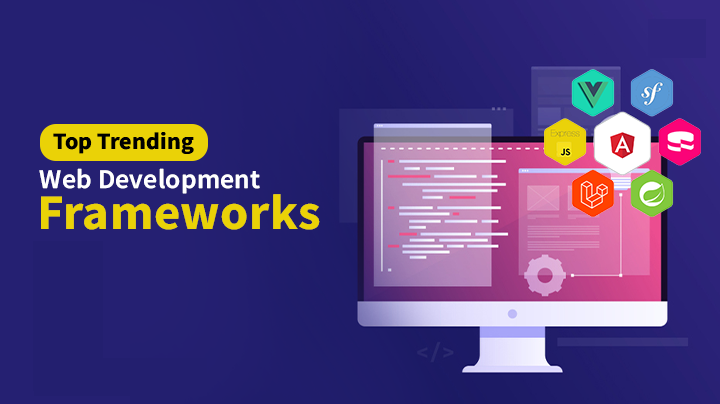Frameworks have evolved as an important part of web development, as the means of web applications are always rising, so does the sophistication of the technology required. It’s completely absurd to reinvent the wheel for such refined techniques -assuming that you can reinvent all that. That’s why using frameworks supported by thousands of designers around the world is a very practical approach to creating rich and interactive web applications. A web app has a backend (server-side) and a frontend (client-side), so we examine both the best Backend frameworks as well as frontend frameworks
As web development continues to evolve, new frameworks and libraries appear to allow designers create efficient, scalable, and feature-rich web applications. In 2023, several trap growth frameworks are expected to be at the vanguard of the drive.
Here are the top 5 web development frameworks to consider in 2023:
- React: React, developed and maintained by Facebook, remains a dominant force in the web development landscape. It’s a JavaScript library for building user interfaces, particularly single-page applications. Reach’s component-based architecture, virtual DOM, and strong developer community make it a top choice for building interactive and responsive web applications.
- Vue.js: Vue.js is another JavaScript framework gaining significant traction. It’s known for its simplicity and ease of integration into existing projects. Vue’s progressive nature allows developers to adopt as much or as little of the framework as needed, making it versatile for a wide range of applications. Its growing ecosystem and active community make it a strong contender in 2023.
- Angular: Angular, developed by Google, is a comprehensive framework for building dynamic web applications. Although it has a steeper learning curve compared to React and Vue, it offers a robust set of tools and features, including a powerful CLI, dependency injection, and a well-defined architecture. Angular continues to be a top choice for enterprise-level applications.
- Node.js: While not a traditional web development framework like the others on this list, Node.js remains essential in the web development ecosystem. It’s a runtime environment that allows developers to use JavaScript for both front-end and back-end development. Node.js’s event-driven, non-blocking I/O model makes it ideal for building real-time applications and APIs. Its popularity is expected to persist in 2023.
- Django: Django is a high-level Python web framework that simplifies the process of building robust web applications. It follows the “batteries-included” philosophy, offering a wide range of built-in features such as an ORM (Object-Relational Mapping), authentication, and an admin panel. Django is particularly well-suited for developers looking to create secure and scalable web applications quickly.
These frameworks represent a mix of JavaScript libraries and full-stack frameworks that cater to various needs and preferences in web development. The choice of framework depends on factors like project requirements, familiarity with the technology stack, and the development team’s expertise. As technology continues to advance, web developers must stay updated with the latest trends and tools to make informed decisions about which framework to use in their projects.
Benefits of using web development frameworks in 2023:
- Efficiency: Frameworks provide pre-built templates, components, and tools that streamline development, reducing the time and effort needed to create web applications.
- Consistency: Frameworks enforce coding standards and best practices, ensuring a consistent codebase across the project, and making it easier for multiple developers to collaborate.
- Security: Many frameworks come with built-in security features, such as protection against common web vulnerabilities (e.g., XSS, CSRF), helping developers create more secure applications.
- Scalability: Frameworks often support modular and scalable architecture, making it easier to extend and grow applications as they evolve.
- Community and Support: Popular frameworks have large and active developer communities, providing access to tutorials, documentation, and third-party libraries, as well as a network of experienced developers to seek help from.
- Performance: Frameworks are often optimized for performance, with features like lazy loading, code splitting, and caching, resulting in faster-loading web applications.
- Cross-Browser Compatibility: Frameworks are designed to handle cross-browser compatibility issues, reducing the need for extensive testing and browser-specific fixes.
- SEO-Friendly: Many modern frameworks allow for server-side rendering (SSR) or support for search engine optimization (SEO) practices, helping websites rank higher in search engine results.
- Code Reusability: Components and modules in frameworks promote code reusability, allowing developers to use the same code in different parts of an application or multiple projects.
In conclusion, web development frameworks offer a wide range of benefits that can greatly enhance the efficiency, security, and performance of web development projects. The choice of a framework should align with the specific requirements of the project and the expertise of the development team.


